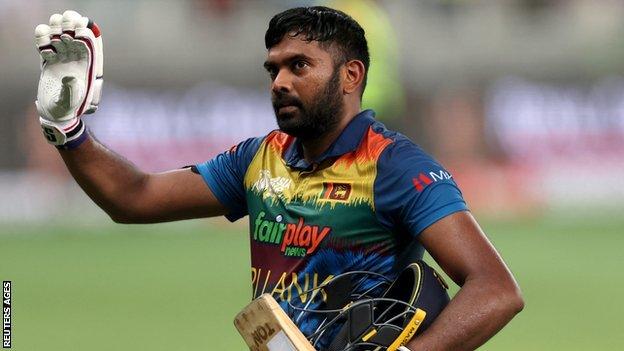From BBC Cricket news
| Asia Cup final, Dubai |
| Sri Lanka 170-6 (20 overs): Rajapaksa 71* (45); Rauf 3-29 |
| Pakistan 147 (20 overs): Rizwan 55 (49); Madushan 4-34 |
| Sri Lanka won by 23 runs |
| Scorecard |
Sri Lanka beat Pakistan by 23 runs in the Asia Cup final to secure an unexpected sixth title in Dubai.
Sri Lanka scored 170-6 off their 20 overs, set up by Bhanuka Rajapaksa's unbeaten 71 from 45 balls.
Mohammad Rizwan scored 55 in Pakistan's reply but Pramod Madushan took 4-34 to end their hopes.
The win marks a big turnaround for Sri Lanka, coached by former England coach Chris Silverwood, after they lost their opening game to Afghanistan.
Victory looked unlikely when Sri Lanka slipped to 58-5, before Rajapaksa and Wanindu Hasaranga came together.
They added 58 for the sixth wicket as Hasaranga scored 36 from 21 balls to steer them to a challenging total.
Fast bowler Haris Rauf led Pakistan's bowling attack with 3-29.
Sri Lanka's bowlers took wickets regularly throughout Pakistan's chase to restrict their scoring, despite Rizwan's efforts at the top of the order.
Seamer Madushan took three top-order wickets quickly, while leg-spinner Hasaranga capped a fine all-round performance with figures of 3-27.
"There was always confidence that the team had talent, we just needed a method," said Silverwood.
"We worked hard and the results are showing. Our young seam attack was superb, but it was a team effort."
Only India have won more Asia Cup titles than Sri Lanka, with seven victories.
Pre-tournament favourites India failed to reach the final following defeats by Sri Lanka and Pakistan in the Super Four stage.

Comments
Post a Comment